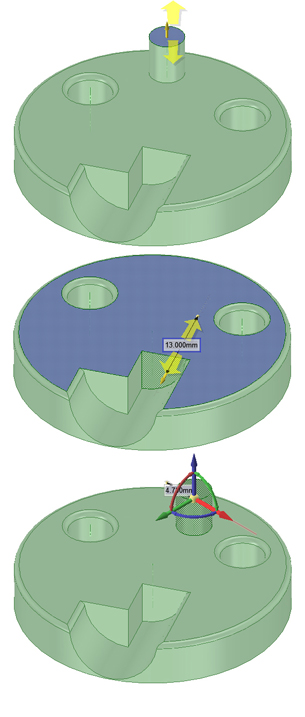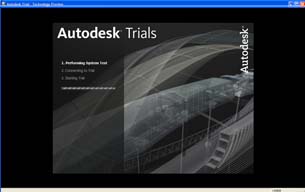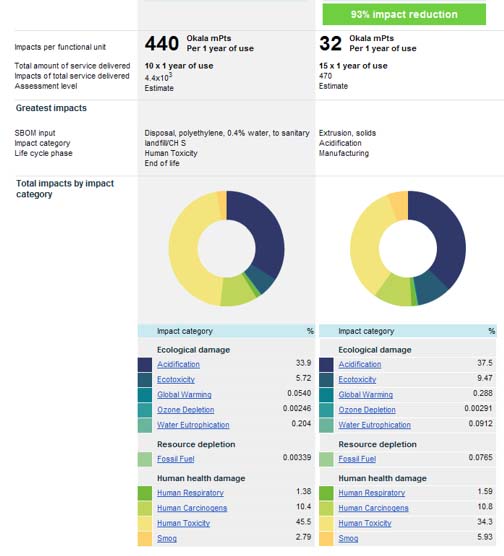Latest News
December 22, 2009
By Kenneth Wong
 Fig 1. Push-pull editing function, as implemented in SpaceClaim. |
As 2009 comes to a close, we can’t help but take note of the specter of the global financial crisis, which lingers like the ghost of Jacob Marley in A Christmas Carol. It’s easy to innovate in good times. Adventure and exploration—the twin spirits that often drive new ideas—cost money. In lean years, most businesses cannot afford to take unnecessary risk. They retreat and focus on survival, leaving a slew of R&D projects on hiatus. Yet, the last 12 months have not been devoid of ingenuity. Among mechanical CAD and PLM (product lifecycle management) developers, you can still find those who called for—and delivered—technologies that propelled the digital design discipline to new heights.
Push-Pull CAD, Now in More Programs
The ability to push and pull on a part’s surfaces and edges to adjust its thickness, diameter, and curvature represents a dramatic departure from traditional CAD modeling, which relies heavily on sketch profiles, dropdown menus, and dialog boxes. The new approach, considered by many to be easier to learn and use, exemplifies how Google SketchUp was able to capture a huge following among casual users and 3D enthusiasts. PTC CoCreate, SpaceClaim, and Siemens PLM Software’s Solid Edge and NX (versions with Synchronous Technology) embrace the same push-pull interface. The new method has been closely associated with direct modeling or history-free modeling, because it doesn’t rely on a feature hierarchy or a historical record to preserve the model’s geometry.
It should be noted that push-pull function is not available in all direct-modeling programs. Kubotek’s KeyCreator is one such example. Though it’s often credited with being a pioneer in direct modeling (that is, modeling without reliance on a history tree), the company has not yet incorporated push-pull editing functions into its software.
Some CAD vendors remain staunch parametric programs, but even so, many have made the effort to let users perform parametric edits using the same push-pull functions found in direct modeling programs. SolidWorks facilitates this via Instant 3D. Alibre offers limited direct editing functions in its two higher end products: Alibre Professional and Alibre Expert. The latest parametric player to adopt this method is PTC Pro/ENGINEER, which incorporates dynamic modeling (yet another name for push-pull modeling).
The emergence of push-pull modeling paves the way for the next step: multi-touch modeling. Harbingers of touch modeling can be seen in lightweight versions of professional applications made available on mobile devices. Autodesk’s SketchBook Mobile is among forerunners. Recently, SpaceClaim broke ground by introducing multi-touch functions—using fingertips and gestures on a pressure-sensitive monitor or tablet device to create and edit models—to the latest version of its software, SpaceClaim 2009+.
Currently, CAD users tend to separate CAD programs into two major camps: feature-based, history-based, parametric modelers on one end; and history-free, direct modelers on the other end. But parametric vendors’ acceptance and incorporation of push-pull functions blur the distinction between the two. In the future, people may care more about the inclusion or exclusion of push-pull functions, less about whether they’re using a parametric or direct modeling program.
Easier Done in the Cloud
In November 2008, AfterCAD, the developer of an AJAX-based CAD viewing and markup tool, made a decision to launch its software into the sky, in a manner of speaking. The company began marketing its viewer as AfterCAD Online, a browser-based solution. This was but one example of a desktop or thin-client software migrating into Web-based Software as a Service (SaaS).
Publicly visible R&D efforts of Autodesk and SolidWorks, housed in Autodesk Labs and SolidWorks Labs respectively, reveal both companies have been paying attention to Web-based CAD viewing and visualization. Example applications include Project Showroom, Project Dragonfly, and Project Freewheel from Autodesk Labs and Drawings Now from SolidWorks Labs. Though not marketed commercially (but available for free as trials), they all point to a future where many of the CAD file viewing, sharing, rendering, and annotation tasks now associated with desktop machines may become executable from a browser—no download, no installation.
Recently, Autodesk went further with the launch of Project Twitch, an early attempt to let users remotely run full-blown CAD modelers from the Internet. Titles available via Twitch are currently limited to AutoCAD, Autodesk Inventor, and Autodesk Revit (Autodesk Maya is on the way). At the present, Autodesk is running Twitch with certain restrictions (for example, you cannot open your own files or save files; you can only experiment with preloaded files).
 Fig 2. Autodesk Project Twitch loading a copy of Autodesk Inventor installed on a remote server. |
Greener Ideas Welcome
While the use of energy analysis programs has become widespread in architecture, the same trend took some time to take roots in mechanical design. Most significantly, 2009 saw the introduction of SolidWorks Sustainable Xpress (now part of SolidWorks 2010) and Autodesk’s partnership with Sustainable Minds.
SolidWorks Sustainable Xpress lets you estimate and analyze the environmental impacts of your design decisions (measured in carbon output, air pollution, water pollution, and fuel consumption). By contrast, Autodesk’s partnership with Sustainable Minds makes it possible for Autodesk Inventor users to export a bill of materials directly into Sustainable Minds’ Web-based environmental impact calculator. Both solutions are aimed at offering guidance to designers so they might consider materials and manufacturing methods that are more conducive to a healthier environment.
The new attitude in manufacturing is to produce greener products, not just because regulatory bodies demand compliance but because consumers want products that are created in an environmentally responsible manner. Soon, CAD-integrated carbon estimation may become as prevalent as stress analysis.
 Fig 3. SustainableMinds, a Web-based sustainability analysis program, reports environmental impacts of design decisions. |
So Long 2009; Hello 2010!
So what are the other technological trends that I might have overlooked? To conduct a quick (and hardly scientific) poll, I logged into the cloud, known as Twitter. Mark Burhop (@burhop), a Siemens PLM Software product manager, identified “iPhone design apps” as a noteworthy trend. Sean Dotson (@SeanDotson), president of RND Automation and a Autodesk Inventor user, pointed to “Alibre’s $99 deal” and “Autodesk’s new upgrade policy” as signs of CAD vendors lowering prices to thaw sluggish sales. What’s your thought? Please email meor leave a note on Desktop Engineering’s Facebook fan page.
Thanks for following my musing in 2009! Hope to serve you well in 2010!
Subscribe to our FREE magazine, FREE email newsletters or both!
Latest News
About the Author
Kenneth Wong is Digital Engineering’s resident blogger and senior editor. Email him at [email protected] or share your thoughts on this article at digitaleng.news/facebook.
Follow DE





